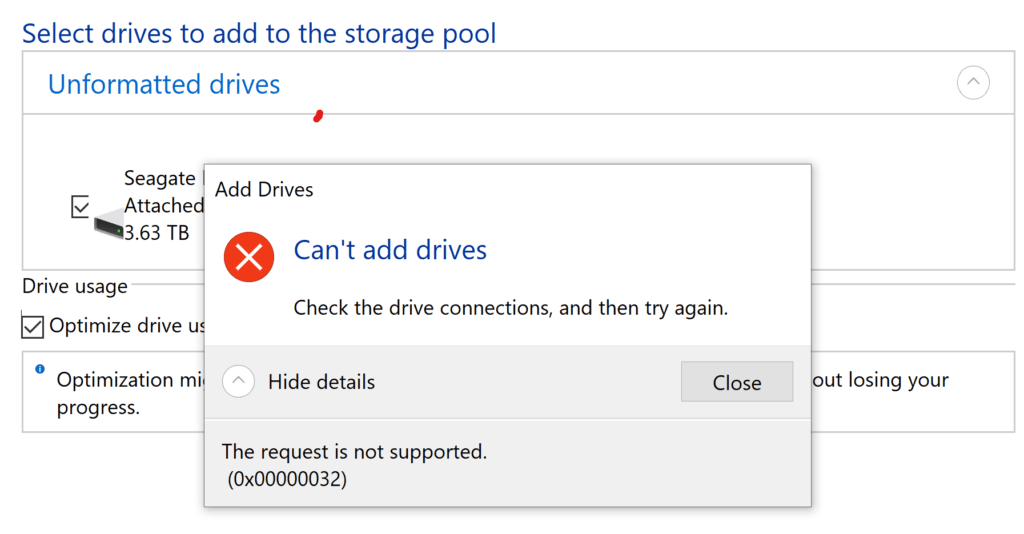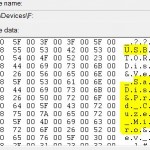When trying a add a disk drive to a storage pool of Storage Spaces, whether it’s internal HDD or SSD or portable external USB disk drive, the following error message may occur, and the disk addition to the storage pool failed:
Can’t add drives
Check the drive connections, and then try again.
Expanding the details indicates that the error was due to the request is not supported with 0x00000032 error code.
If you use PowerShell Add-PhysicalDisk cmdlet to try to add a disk to Storage Spaces pool, it will return the following error:
Add-PhysicalDisk : One or more physical disks are not supported by this operation.
Extended information:
One or more physical disks encountered an error during addition to the storage pool.Physical Disks:
{Disk Unique ID}: The request is not supported.Activity ID: {Activity ID}
At line:1 char:1
+ Add-PhysicalDisk …
+ ~~~~~~~~~~~~~~~~~~~~~~~~~~~~~~~~~~~~~~~~~~~~~~~~~~~~~~~~~~~~~~~~~~~~~
+ CategoryInfo : NotSpecified: (StorageWMI:ROOT/Microsoft/…_StorageCmdlets) [Add-PhysicalDisk], CimException
+ FullyQualifiedErrorId : StorageWMI 51000,Add-PhysicalDisk
To add a disk to Storage Space storage pool, the disk has to be clean. It means that the disk drive should not have any volume or partition it, and ideally should just be initialized.
Thus, if you attempt to add an existing hard disk, or a new preformatted disk drive to the storage pool, you should try to delete and remove all partitions and volumes on the disk through Disk Management.
But if you can’t add the drive to storage pool even if the disk is clean, then the error may be caused by faulty disk metadata. To resolve the issue so that the disk can be attached to the pool, try to reset the disk.
- Open PowerShell window as Administrator (normally accessible from Win-X menu if you don’t replace PowerShell with Command Prompt).
- Run the following command to get a list of all your physical disks with their friendly name, unique ID, serial number, media type, size and etc.:
Get-PhysicalDisk
- Reset the problematic disk by FriendlyName or by UniqueId:
Reset-PhysicalDisk -UniqueId "abcdefgh12345678"
Reset-PhysicalDisk -FriendlyName "physical-disk-name"
Replace the value for UniqueID or FriendlyName with actual unique ID or friendly name shown in step above.
Make sure that you identify the correct disk and enter the correct Unique ID or Friendly Name, as the command will wipe the whole disk drive. If there are multiple disks using the same friendly name, then you must use unique ID.
Once the disk is reset, you can try to re-add the disk to the Storage Spaces pool.








